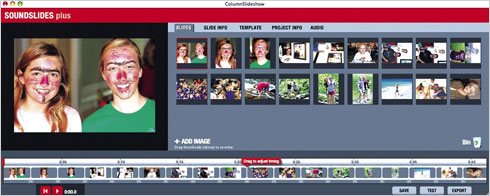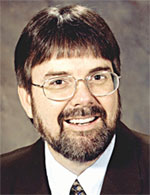|
Main Stories
Creating high quality audio slideshow online with minimal effort
Soundslides is the easiest way to get a high quality audio slideshow online with minimal effort. Mentioning why it is so, Kevin Slimp pointed out the features of the latest version of Soundslides for a ride around the block.
F irst, some background information. Joe Weiss - whose resume includes stints as interactive producer at The News & Observer in Raleigh, NC, director of photography at The Herald-Sun in Durham, NC, and multimedia producer at MSNBC.com - first began creating audio slideshows in 1992. Working in Flash, Weiss would go through the painstaking process of creating audio slideshows. Over time, he created a utility that automated much of the Flash programming. It took more than two years, but Soundslides was born in 1995. At first, Soundslides was Mac compatible only, but recent versions are available on both the Mac and PC platforms.
After opening Soundslides for the first time, I created my first audio slideshow in less than twenty minutes. And that included creating the audio for the slideshow. As mentioned, Soundslides doesn’t edit photos or audio, so that’s done in advance. Audio can come from any source that can be converted to mp3, a popular digital audio format. This includes most audio that would be recorded from a digital audio recorder or recorded on a computer. It’s important to remember that the length of the audio slideshow is determined by the length of audio. Using the software couldn’t be much simpler. Upon starting the application, the user is instructed to select a folder. JPEG (photo) files in the designated folder are distributed throughout the slideshow. Next the user is prompted to select a sound (mp3) file. In a matter of seconds, Soundslides imports the audio and opens the slideshow. At this point, the user could simply export the audio slideshow and upload the resulting folder of files to a website. However, there’s a lot more that can be done in Soundslides. Timing can be altered to allow more time for some photos and less for others. Templates can be selected with different background colours, fonts and layout options. Photos can be moved, added and deleted. After all changes have been made, the audio slideshow never changes. Once you’re happy with your results, click on the ‘Export’ button and a folder of files is created that can be uploaded ‘as is’ to a website. After creating a link on a web page, the resulting audio slideshow will appear on its own page in your internet browser. 
For users wishing to build a slideshow directly onto a web page, Soundslides provides a method for creating custom code that can be used on most websites. Mine worked perfectly. To see the results, visit kevinslimp.com and watch the slideshow on the right sidebar. Soundslides comes in two flavours. The $39 (US) version does everything I’ve described. Soundslides Plus ($69) adds: pan and zoom (aka “ken burns” effect), the ability to use lower thirds, full-screen playback mode, and the ability to create slideshows without audio. Sure, you could create audio slideshows in iMovie, Vegas or another video editing application. But it’s so much easier in Soundslides. For more information, visit soundslides.com. nnn
|
